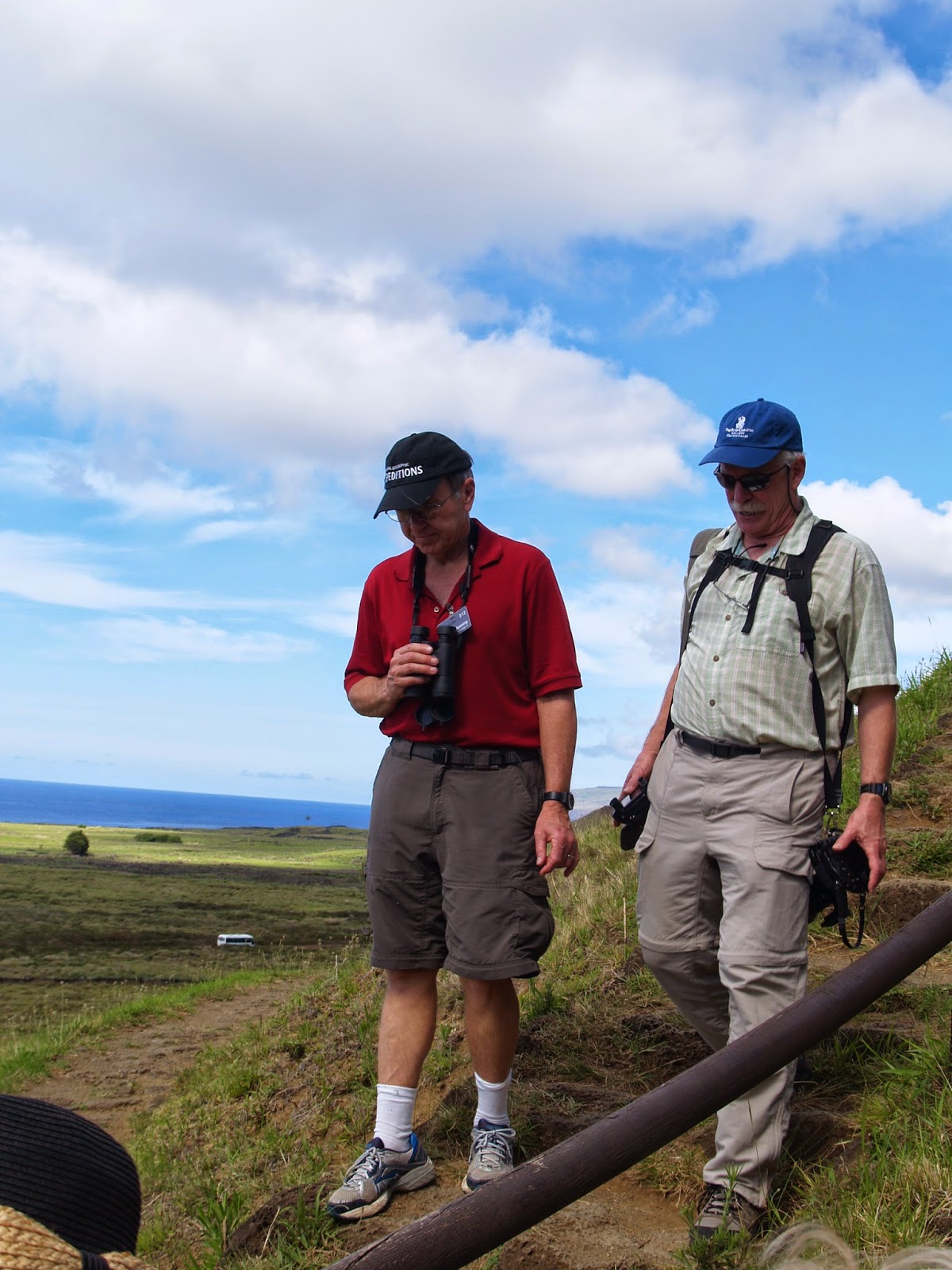We hiked around Rano Raraku – the volcanic mound that served as the
quarry for the moai. The island is
very green (a more rainy summer than usual) – but barren of trees in most
places; a few eucalyptus areas introduced in recent years, a few palms in local
areas. Many free ranging horses –
“owned” by the local people, but let loose to roam the island. There are more horses on the island (10,000) than people (5,000).
The moai were moved into place in ways that haven’t fully
been determined. The new NG
special talks about “walking them” into place with ropes and rocking. However, the island archeologists, Patricia and Claudio, think
they are too fragile and were moved by rolling platforms and sleds. It may have taken 5 years to carve and move a statue into place.
The moai statues represent ancestors who have passed away and are
immortalized to protect them. They
were moved with their eyes uncarved and when they arrived at the platform
location the eyes were opened and the ancestral spirit inhabited the moai, giving it
power.
The moai were chiseled out of the rock at the quarry with
stone tools in situ in a laying down position.
They formed a deep channel underneath the carving, and then eventually a keel, and finally loosened it for transport. There are more than 400 moai around the quarry; many broken on the way to the coast.
 |
| Volcanic crater that was the site for the moai statue carving - they were then moved to the coastal ahu plateaus |
 |
| Two moai still in situ in the quarry at various stages of carving |
 |
| Twice as many horses as people on Easter Island |














No comments:
Post a Comment